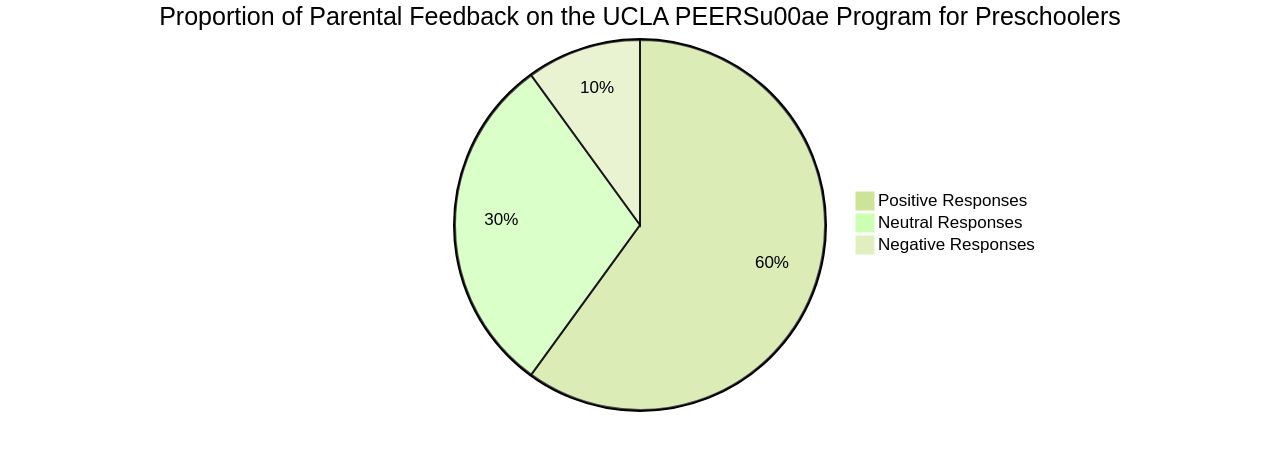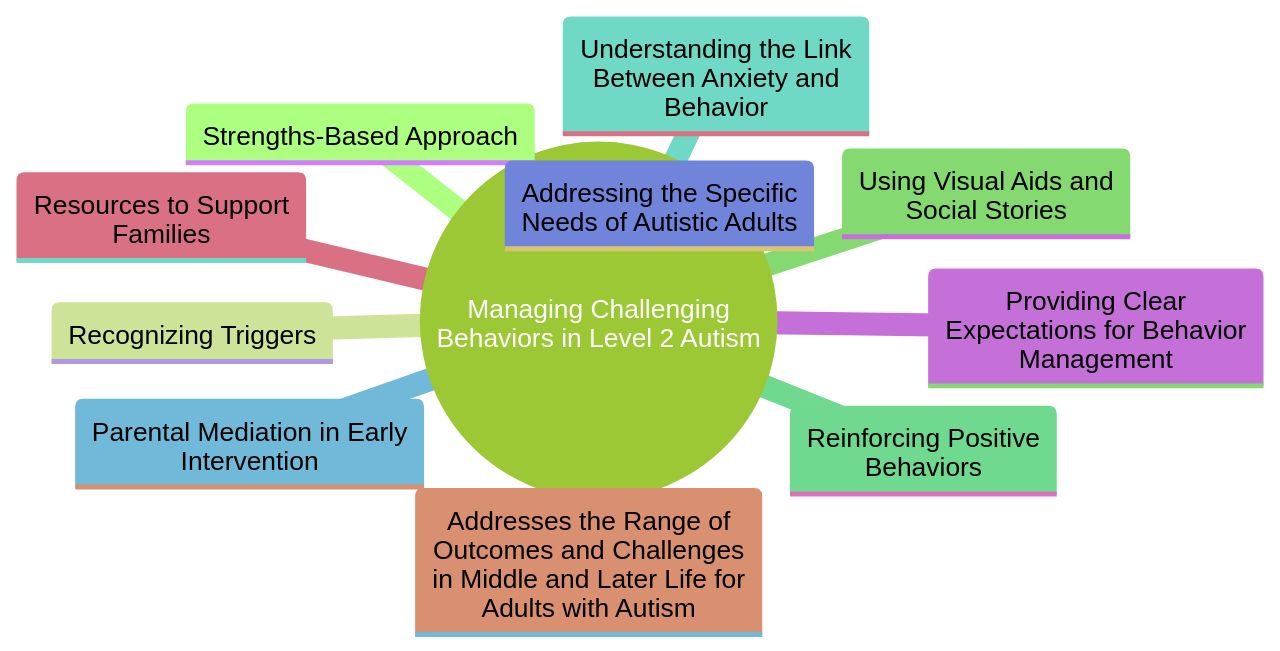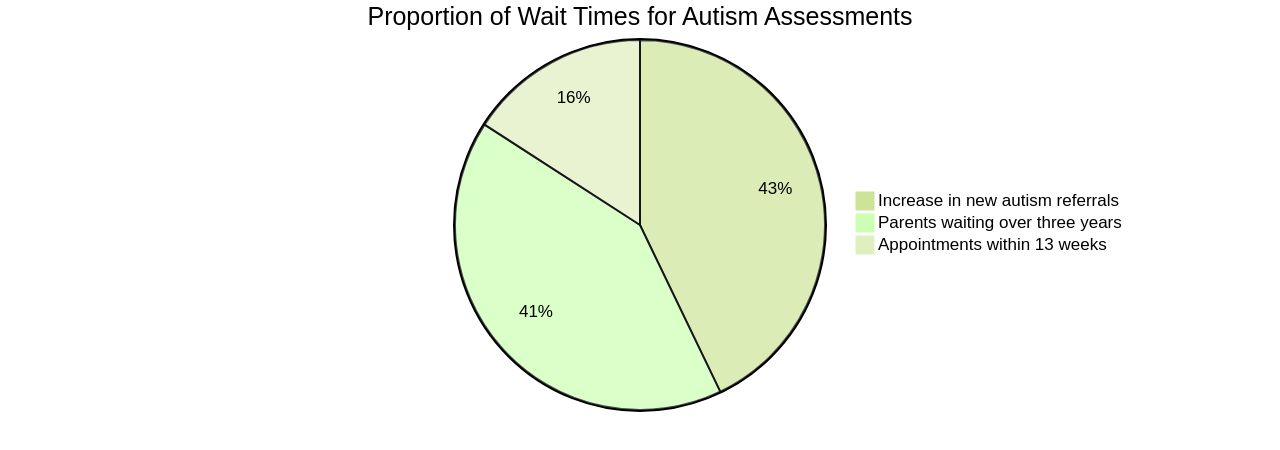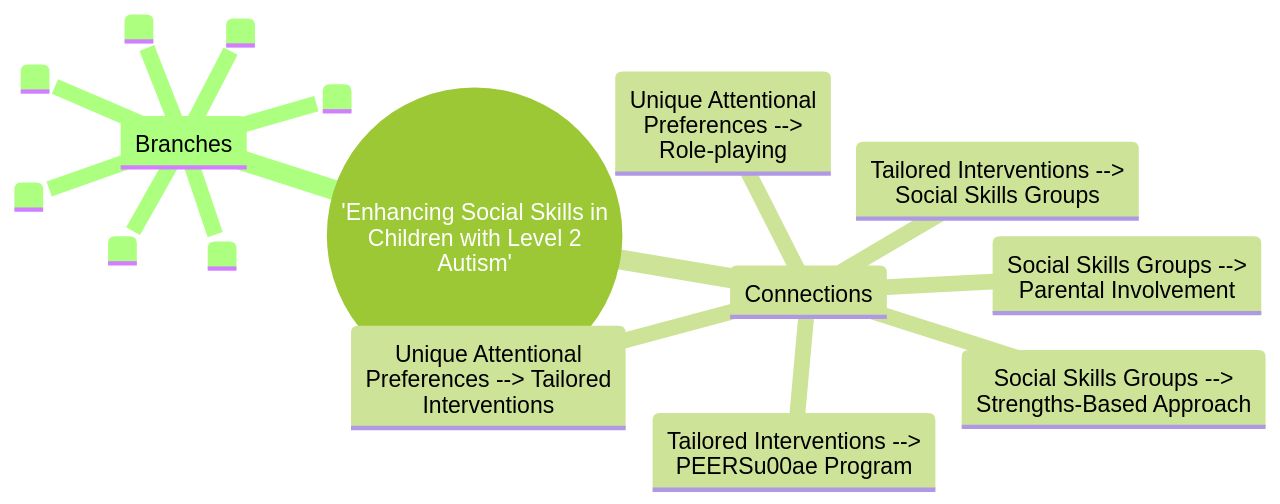Introduction
Children with Level 2 Autism, also known as moderate autism, exhibit distinct characteristics that can significantly impact their social interactions and behaviors. They may struggle with initiating or responding to social interactions and display repetitive or restrictive behaviors.
Communication, both verbal and non-verbal, can also be challenging for these children. Recognizing these key characteristics is crucial in devising effective strategies to support them. This article will explore the characteristics and challenges of Level 2 Autism, the role of ABA therapy in enhancing social skills, practical strategies for managing challenging behaviors, navigating support services for parents and professionals, time management tips for parents, techniques and activities to enhance social skills development, and the importance of building a supportive community.
# 1. Understanding Level 2 Autism: Key Characteristics and Challenges
Children with moderate autism, also known as Level 2 Autism, exhibit distinctive characteristics which can significantly influence their social interactions and behaviors. These children often encounter difficulties when attempting to initiate or respond to social interactions and may display repetitive or restrictive behaviors.
Their ability to communicate, both verbally and non-verbally, may be compromised, posing challenges in expressing their needs or understanding others. Recognizing these key characteristics is a fundamental step in devising effective strategies to support these children and improve their social skills.
According to the DSM-5, a manual used by clinicians for diagnosing Autism, the central features of Autism should be evident early in childhood. However, for some children, the symptoms may not be fully noticeable until the social demands surpass their capacity to cope.
Furthermore, challenges may be concealed by learned coping strategies and support. Autism typically appears by age 3, but diagnosis and intervention can, and indeed should, commence earlier.
For an accurate diagnosis, observation by professionals adept at determining communication, behavioral, and developmental levels is crucial. Stigma and barriers such as lack of access to healthcare services due to non-citizenship or low income, and non-English primary language can delay the early identification of Autism in Hispanic children and children of color.
It is noteworthy that boys are approximately 4 times more likely to receive an Autism diagnosis than girls of the same age. However, recent research proposes that girls may not exhibit Autism characteristics in the same manner as boys and might go undiagnosed due to their different presentation.
There is no known single cause for Autism, but it is generally accepted that it is caused by differences in brain structure or function. Brain scans reveal differences in the shape and structure of the brain in individuals with Autism compared to those with neurotypical development. Researchers are investigating a number of theories, including the links among heredity, genetics, and medical problems. In the words of Seth Godin, 'When enough people care about autism or diabetes or global warming, it helps everyone, even if only a tiny fraction actively participate.' This highlights the importance of awareness and understanding when it comes to Autism. As the prevalence of Autism appears to be increasing globally, there is a need for trained professionals and facilities. Early identification, building a solid foundation from childhood through adolescence, and providing support that enhances the highest possible quality of life and independence are the areas where autistic people need services. Currently, no cure is available for ASD, but with appropriate support and understanding, children with moderate autism can lead fulfilling lives.

# 2. The Role of ABA Therapy in Enhancing Social Skills in Children with Level 2 Autism
The efficacy of Applied Behavior Analysis (ABA) therapy in aiding children diagnosed with Level 2 Autism is undeniable. It harnesses the influence of positive reinforcement to foster beneficial behaviors and mitigate challenging ones.
This is especially crucial in honing communication skills, deciphering social cues, and fostering effective interactions with others. Parental engagement in such programs is indispensable as it allows them to extend the intervention strategies beyond therapy sessions.
This not only equips them with knowledge and social backing but also lightens the load of parenting stress. A notable example is the UCLA Program for the Education and Enrichment of Relational Skills (PEERS®) for Preschoolers, an evidence-based social skills intervention for young autistic children who encounter social hurdles.
Parental feedback on this program was collected via questionnaires and semi-structured interviews. The response was overwhelmingly affirmative, with parents recording an uptick in their children's social skills and self-assurance.
Similarly, parents felt more optimistic, supported, and had a deeper comprehension of their child's development. Nonetheless, it's critical to remember that extended school year services are typically required for many individuals with autism to prevent the loss of crucial skills during lengthy breaks from school, such as summer vacation.
The COVID-19 pandemic served as a stark reminder of this, with behavioral issues escalating in over a third of individuals with autism due to the prolonged break from school. Dr. Hannah Schertz from Indiana University Bloomington's School of Education underscores the need for early intervention guided by parents to enhance social communication in toddlers with autism.
The emphasis on social communication stems from its direct connection to future language competency. The range of programs available for children with autism is extensive, each aiming to assist these children, albeit with differing philosophies and varying levels of accessibility. Despite the availability of outcome data for some of these programs, there is a dearth of empirical studies comparing them. This underscores the demand for further research in this area, especially for programs catering to the birth to 3 age group. By integrating ABA therapy and parental involvement into their daily routines, we can offer the necessary support to help these children flourish socially. The ultimate objective is to ensure that children with Level 2 Autism lead the best possible life, enjoying independence to the fullest. As a supportive measure, the digital platform www.asd.media offers unlimited access through two subscription options, enabling parents to stay informed and equipped with necessary resources. Although the prices remain undisclosed, the availability of these resources can provide an additional layer of support for families navigating the complexities of autism.

# 3. Practical Strategies for Managing Challenging Behaviors in Children with Level 2 Autism
Tackling challenging behaviors in children diagnosed with Level 2 Autism calls for compassion, understanding, and the implementation of effective strategies. It's crucial to recognize the triggers that incite challenging behaviors, aiming to manage or circumvent these triggers.
Visual aids and social stories serve as useful tools to help these children comprehend social contexts and expectations, thereby mitigating anxiety and potential behavioral concerns. The importance of reinforcing positive behaviors cannot be overstated, as research has shown that children with autism often possess excellent memory, developed visual thinking, attention to detail, and other valuable skills.
By focusing on these strengths, we can support children with autism to access their maximum potential. This strengths-based approach, first theorized by social worker Bertha Reynolds, shifts the focus from the flaws of people with mental illnesses to their strengths.
Understanding the link between anxiety and behavior is crucial. Anxiety in children often manifests differently, making it difficult to recognize.
However, comprehending why meltdown behavior can be so extreme enhances the chances of preventing the next episode from escalating to the same degree. Children often communicate their needs through their behaviors, especially following stressful events.
This is because they may not have developed the language or tools to express what they're experiencing internally. If a child is acting out or unusually irritable, it's likely they're feeling overwhelmed, confused, and stressed about some strong emotions, and lack the skills necessary to manage the situation or their stress response.
Parental mediation in early intervention has proven crucial for very young children with autism. This approach targets social communication, a core autism challenge, and it’s important to address concerns early, as signs of autism emerge. Children with autism often face psychological and societal challenges upon reaching adulthood, and it's important to understand their specific needs. Autistic adults' therapeutic needs for conditions such as anxiety and depression are not much different from those of anyone else. However, many autistic adults report being turned away by practitioners. Lastly, it's important to provide clear, consistent expectations to foster better behavior management. As Lindsey Pruett-Hornbaker, MA, often tells her daughter, 'You can do hard things!' It's crucial for children to know that they have the skills and confidence to manage challenges and that they have the support they need when things get tough.

# 4. Navigating Support Services: Resources for Parents and Professionals
Navigating the maze of support services for children diagnosed with Level 2 Autism can be overwhelming for parents and professionals alike. But take heart, there are a plethora of resources poised to help.
ASD Media shines like a lighthouse in this landscape, proffering a wealth of resources that encompass industry insights, strategies, and support systems. These tools are tailor-made to empower parents and professionals to overcome hurdles and boost outcomes.
A study involving ten mothers, who themselves are autistic, and their autistic children in mainstream education, discovered that the overarching system, not the individuals within it, was the primary obstacle. These mothers voiced the need to incessantly advocate for the right support for their children.
This sentiment is not exclusive to autistic parents; non-autistic parents have echoed similar concerns. Further, the study revealed that these mothers often felt judged and stigmatized due to their autism.
They also reported challenges with managing sensory and communication difficulties, an issue seldom discussed by non-autistic parents. Hence, it is evident that enhancing services to better accommodate autistic families is imperative and can be achieved through improved training.
This training should be curated and delivered by autistic adults, emphasizing the positive facets of autism. Autism is a form of neurodivergence, meaning that children with autism process information differently than neurotypical children.
Autism may impact a child's communication, social interaction, behavior, or sensory processing. However, the journey of every autistic child is unique.
They may grapple with heightened levels of anxiety or learn to camouflage their difficulties, which can muddle the process of securing appropriate support. The National Autistic Society launched the Autism Accreditation in 1992.
This autism-specific quality assurance program was devised to enhance the support available to autistic individuals in organizations across the UK and globally. Till now, over 500 organizations worldwide have achieved Autism Accreditation, meeting a high standard of excellence and adhering to a framework for continual self-improvement and development.
However, the system is not without its flaws. As one parent seeking an assessment for her child noted, the process was an 'absolute nightmare.' The report’s authors contend that children and young people with autism and conditions such as ADHD can flourish in mainstream education if their needs are met promptly. Early identification and support can also offset the negative and costly impacts on autistic children’s physical health. However, since Covid-19, there has been a 306% surge in the number of children awaiting an autism assessment. Just one in 10 children are getting an appointment within 13 weeks of being referred, while more than one in four parents have waited over three years to receive support for their child. The system is grappling with immense pressure, with a 27% increase in new autism referrals over the last year. In July 2022, more than 125,000 people were waiting for an autism assessment by mental health services, a rise of 34% since the previous October. By subscribing to ASD Media, individuals can keep abreast of the latest news and gain unlimited digital access to these valuable resources. They offer a subscription plan priced at $130 per year and a featured offer for $5-7 per month. This will enable parents and professionals to stay informed and equipped to handle the challenges that come with supporting children with autism.

# 5. Time Management Tips for Parents: Balancing Responsibilities while Supporting your Child
Supporting a child with Level 2 Autism can indeed be a demanding task, especially when juggling multiple responsibilities. It's akin to mastering the art of executive function, a skill set that includes planning, inhibition, and the ability to switch between activities.
These abilities are not just essential for managing daily tasks, but also for facilitating the social and cognitive development of a child with autism. Time management is crucial.
It involves setting realistic goals, prioritizing tasks, and adhering to a structured routine. It's like being a conductor, orchestrating the symphony of daily life.
But remember, the goal is not to reach perfection but to do your best in ensuring your child's needs are met. Autism is a spectrum, with each day bringing its unique set of challenges and triumphs.
As an author once said, 'Every day brings a new beginning and a new ending.' It's important to remember this, especially on tough days.
Each day with autism is unique, and the hope for a better tomorrow can be a powerful motivator. In the midst of all this, self-care should not be overlooked.
Activities such as listening to music or taking a warm bath can provide much-needed respite. Physical activities, like jumping on a trampoline or going for a walk, can also be beneficial.
Another powerful tool at your disposal is the use of Social Stories. These are short narratives that help children with autism understand social situations and expectations.
They can be used to guide behavior in different scenarios, such as attending a party or visiting a doctor. By reducing anxiety and enhancing understanding of social cues, Social Stories can boost a child's confidence and minimize the risk of overstimulation. In a world where early signs of autism can be identified in children as young as 12–14 months, the importance of staying informed and vigilant cannot be overemphasized. Remember that the journey of parenting a child with autism is not a sprint, but a marathon. It requires patience, resilience, and an undying spirit of hope. Lastly, don't hesitate to seek support when needed. Parenting a child with autism is a demanding task, and there's no shame in reaching out. After all, it takes a village to raise a child. Remember the words of Dr. Hancock, 'There is an important mismatch between the environment and the child and their way of doing things.' By seeking help and fostering understanding, we can bridge this gap, ensuring a nurturing environment for our children.
# 6. Enhancing Social Skills Development: Effective Techniques and Activities
Children with level 2 autism exhibit their own distinct method of perceiving their environment, frequently directing their attention towards non-social stimuli like textures or geometric shapes. This unique attentional preference is not aligned with the developmental trajectory of typically developing children who, from birth, are fascinated with social elements in their environment, such as faces and social interactions. It's essential to understand this difference and tailor interventions that can guide autistic children onto developmental courses that are more akin to their peers.
Role-playing is an effective technique that provides a safe and controlled environment for children with level 2 autism to practice social interactions and enhance their social skills. This method is akin to their innate fondness for certain stimuli, making the learning process more engaging for them. Another effective strategy is the participation in social skills groups.
Children with level 2 autism can benefit from these groups as they provide opportunities for them to interact with peers, learn from each other, and gradually develop social attention at their level of ability. A fine example of this is the University of California, Los Angeles Program for the Education and Enrichment of Relational Skills (PEERS®) for Preschoolers. It is an evidence-based intervention that has shown positive outcomes.
Parents of children who participated in this program reported increased social skills and confidence in their children. Involving parents in these programs is crucial, especially for children with level 2 autism, as they can apply the intervention strategies outside of sessions and continue to foster the learning process for children at this specific level of autism. In addition, teaching parents skills to help their children with level 2 autism also reduces parenting stress through empowerment, knowledge, and social support.
The involvement of parents has been shown to foster a more positive atmosphere, providing them with a greater understanding of their child and their development. Lastly, incorporating social skills training into everyday activities can make learning more natural and enjoyable for the child. This strengths-based approach, initially theorized by social worker Bertha Reynolds, focuses on the strengths of individuals rather than their flaws.
When it comes to children with level 2 autism, it could imply leveraging their excellent memory, developed visual thinking, and attention to detail to support their social skills development. In conclusion, enhancing social skills in children with Level 2 Autism involves understanding their unique attentional preferences and tailoring interventions that meet their needs. With the right techniques, activities, and parental involvement, these children can be guided onto developmental courses more akin to their peers.

# 7. Building a Supportive Community: Sharing Experiences and Learning from Each Other
Fostering a supportive environment for parents and those working with Level 2 Autism diagnosed children is pivotal. The potency of shared experiences and collaborative learning can bring forth invaluable insights and support.
ASD Media is committed to nurturing such a community, a safe haven for individuals to exchange experiences, learn, and grow together. This collective effort empowers parents and professionals to secure the necessary support and resources to enable children with Level 2 Autism to thrive.
A study involving ten autistic mothers of autistic children in mainstream education illuminates the systemic challenges they encounter while seeking support from healthcare and education services. The mothers expressed their struggles with the system, not the individuals within it, emphasizing the need for systemic changes rather than individual ones.
They also shared their experiences of feeling judged and stigmatized for being autistic, along with managing sensory and communication difficulties. These issues highlight the need for enhanced training and support for autistic families, focusing on autism's positive aspects instead of the negative.
Interestingly, parents in the UK are spearheading an innovative approach to provide their high-needs autistic children with residential accommodation. They are collaborating with local councils to create supported-living homes in response to the growing difficulty of securing suitable, safe, and secure residential care.
A success story is Linden Farm, a joint venture between the Simon Trust and Surrey county council. The Simon Trust was established when Sally and Peter Lawrence, parents of Simon, were told by their local authority that there were no local living options for their 25-year-old son after he left his residential school.
Unwilling to send their son, whose needs are complex, to another county, the Lawrences persuaded their council to purchase a local site. They then founded a charity, raised £250,000, and partnered with the council to establish Linden Farm, a facility that provides accommodation, activities, and specialized care for autistic adults with complex needs.
Parenthood experiences can significantly impact an individual's well-being, both positively and negatively. However, autism research has mainly overlooked this aspect of adult life, focusing more on non-autistic parents of autistic children rather than autistic parents of autistic children.
Enhanced services offering better support to autistic families are vital, achieved through comprehensive training developed and run by autistic adults. Jan Stewart, a respected mental health and neurodiversity advocate and Chair of Kerry’s Place Autism Services, Canada’s largest autism services provider, urges parents to persist in seeking the help they need.
Her memoir, Hold on Tight: A Parent’s Journey Raising Children with Mental Illness, provides a starkly honest account of her journey parenting two children with multiple mental health and neurodevelopmental disorders. She reminds parents that help and hope are available, and they are not alone in their journey. In light of these challenges, it's evident that the right support for autistic children is essential for their long-term outcomes. The lack of adequate support can lead to an increased prevalence of related conditions such as mental ill health and a greater risk of school exclusion or non-attendance. A report reveals that over one in four parents have waited over three years to receive support for their autistic child, with only one in ten children receiving an appointment within the recommended 13-week waiting period. The report advocates for more assessments in nurseries and schools, more support for autistic children before diagnosis, and the establishment of formal local partnerships between schools, health services, voluntary services, and universities. ASD Media is a resourceful platform that offers unlimited digital access. They provide two subscription plans, $5-7 per month or $130 per year, enabling parents and professionals to access valuable resources and support. With a simple click on the 'Subscribe' button, you can gain access to a wealth of knowledge and insights. The website also provides a 'Close' button to exit the subscription window whenever needed.
Conclusion
In conclusion, understanding the key characteristics and challenges of Level 2 Autism is crucial in devising effective strategies to support children with moderate autism. The role of ABA therapy in enhancing social skills and the importance of parental engagement in these programs cannot be overstated.
Practical strategies for managing challenging behaviors, such as recognizing triggers and reinforcing positive behaviors, are essential for parents and professionals. Navigating support services can be overwhelming, but resources like ASD Media provide valuable insights, strategies, and support systems for parents and professionals.
Time management is crucial for balancing responsibilities while supporting a child with Level 2 Autism, and self-care should not be overlooked. Building a supportive community is vital, as shared experiences and collaborative learning can bring invaluable insights and support.
Enhancing social skills development involves tailoring interventions to meet the unique needs of children with Level 2 Autism. Techniques such as role-playing, participation in social skills groups, and incorporating social skills training into everyday activities can be effective in fostering social development. Overall, it is important to remember that every child's journey with autism is unique. By staying informed, seeking support when needed, and fostering understanding within our communities, we can create an inclusive environment where children with Level 2 Autism can thrive and lead fulfilling lives.




